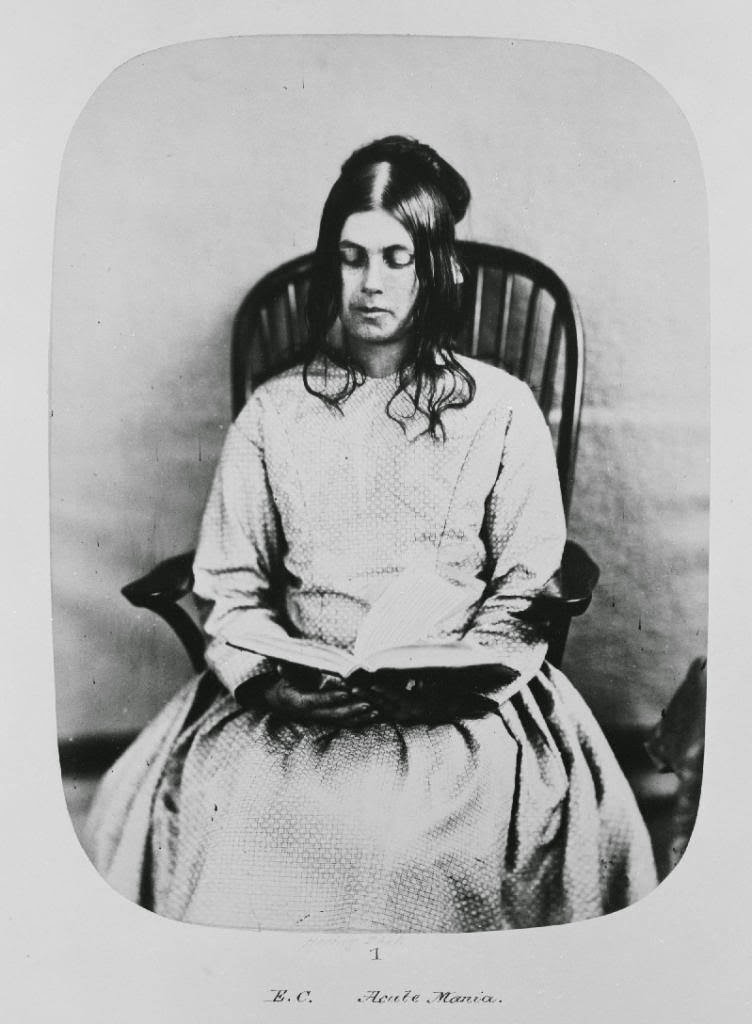 |
| Patients in a Victorian Asylum (from the BBC). |
 |
| Eliza Camplin |
The photos of Harriet Jordan are also interesting.
 |
| Harriet Jordan, diagnosed with mania. |
 |
| Harriet Jordan, a few months later. |
Hering took his photos at Bethlem Hospital, and Stoker gives us the impression of a great big asylum, but most people 'diagnosed' with Victorian mental conditions were simply locked away in the private homes of non-medical men, who set up to profit from these arrangements. Families paid for secrecy and discretion.
Hospitals used padded rooms to keep patients from injuring themselves.
| Photo by Henry Hering. |
Women were thought to be at particular risk of mental illness caused by supposed disorders of the reproductive system. Cases of melancholia associated with the menopause were treated with leeches to the pubis. The male doctors of the day saw ‘hysteria’ – from the Latin for womb – everywhere; almost any form of behaviour, such as excited chattering with other women, could be diagnosed as hysteria. - Wendy Wallace
| Photo by Henry Hering. |
I'd venture to say that these people were lucky to end up in Bethlem - not in some fake doctor's private home.
 |
| More photos by Henry Hering |
Cycling for the Insane' was an article published in a late-Victorian medical journal about the benefits of cycling for mental health patients. It reflects a movement to treat medical problems with moral solutions, a trend also reflected in the number of institutions established and constructed during the nineteenth century.
Doctors working in these mental institutions exaggerated the success of their methods. More patients poured in. By the 1890s, most died there.
Many mental hospitals closed in the 1970s and 1980s. This was due to pressure from the antipsychiatry movement, feminist criticism, ex-patient activism and political suspicion of large, unaccountable institutions. - The Science MuseumThroughout October 2014, I will be sharing the horror stories of 1890s London. Check back often!
Follow me on Twitter @TinyApplePress and like the Facebook page for updates!
If you have enjoyed the work that I do, please consider supporting my Victorian Dictionary Project!
